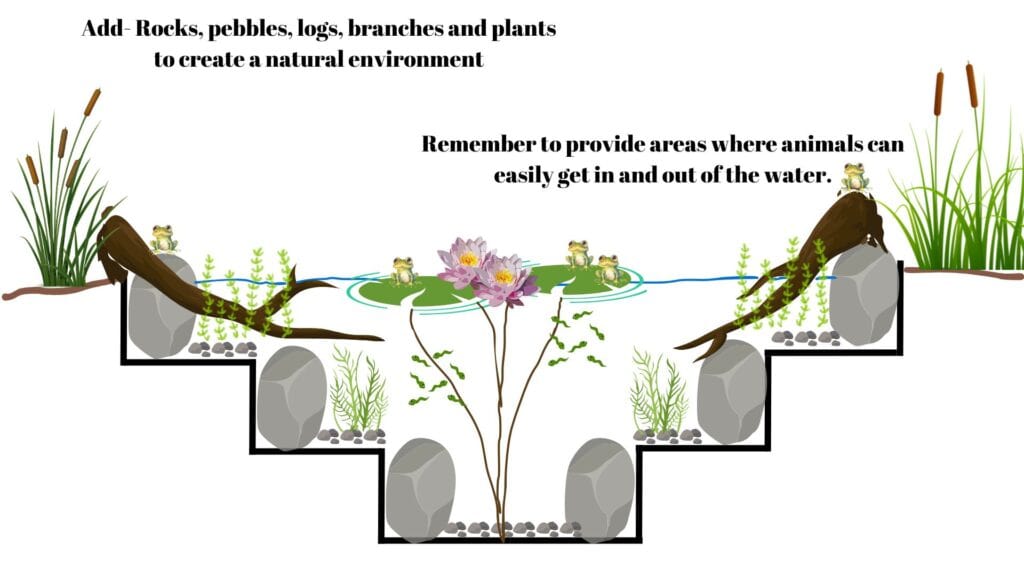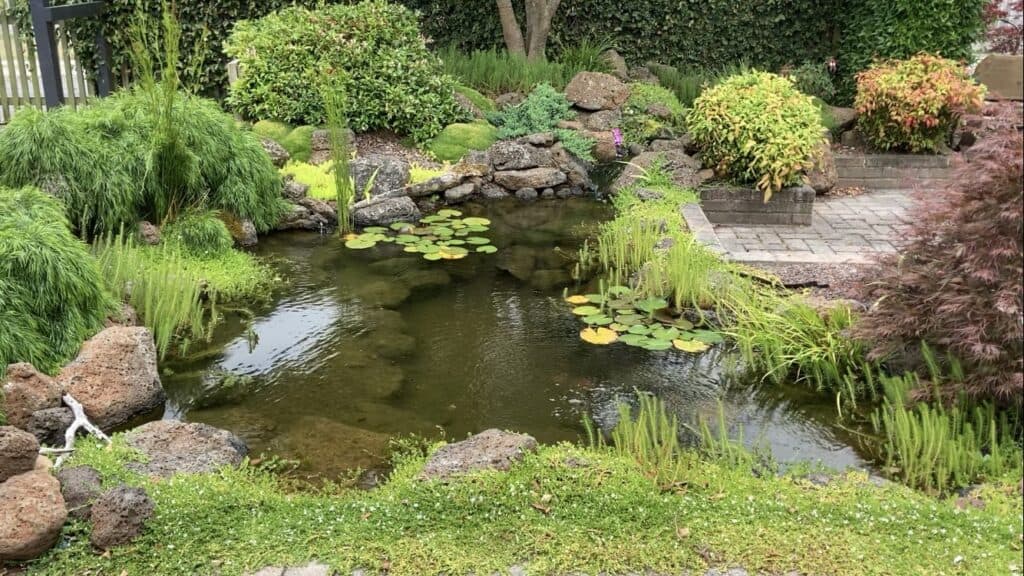Years ago, when I first started building ponds, I couldn’t find much practical information on how to do it. So, I just started experimenting and learning as much as I could.
There are a lot of ways to build a pond, but the method that really resonated with me was one that looked natural and was low maintenance.
These days, I have several ponds throughout my property. Each one has clean, clear, healthy water — and the best part? They’re extremely easy to maintain. In fact, I barely have to do anything to them.
In this post (based on my YouTube video), I’ll show you how I design these ponds so they stay clean and healthy, and how you can do the same without blowing the budget.
If you prefer video to reading here’s the vid:
A Quick Intro
If you don’t know me, my name’s Kev, and the aim of my channel and website is to help people build and maintain ponds without spending a fortune.
Below is a video showing most of my ponds currently. I try and do an update video at least once a year.
The Basics of My Pond-Building Method
These natural-looking ponds are built using a pond liner. I always use EPDM rubber liner — it’s stretchy, durable, and easy to work with.
Depending on the ground conditions and the size of the pond, I often use a non-woven geotextile underlayment beneath the liner to protect it from punctures.
The liner is the most expensive component of the build, so this is where I don’t cut corners. But the filtration system is where we can save thousands — without sacrificing water quality.
👉 Looking for liner or geotextile? Click the highlighted links above.
Making It Look Natural
To make the pond look natural and hide the liner, I use river rock and pebbles. These also create pockets for aquatic plants, which help balance the ecosystem.
When digging the pond, I build shelves into the design. This makes it easier to place rocks and plant aquatic vegetation.
If you can get the right balance of plants, bacteria, fish, and other critters, you might not need any filtration at all — but getting that balance just right can be tricky.
If it’s off, you could end up with a stagnant, green, smelly mess.

Why I Always Add Filtration
It’s much more predictable (and way less stressful) if you include a filtration system that’s properly sized for your pond.
The best part? You can design it to blend into the landscape.
You also get water movement, which not only looks great but helps with oxygenation. I mean, who doesn’t love sitting beside a gentle stream or waterfall?
The Filter System I Use
After years of trial and error, here’s the system I now use in most of my ponds:
- A bog filter
- An intake bay
What’s a Bog Filter?
A bog filter mimics a natural wetland. Water flows slowly through a substrate (usually river rock and pebbles), and aquatic plants are planted directly into it.
As the water travels through the substrate and around plant roots, it gets naturally filtered.
Once filtered, it can return to the main pond via a stream or waterfall. Your filter ends up looking like a garden, or even a smaller pond beside your main one.
You can build bog filters using pond liner or watertight containers, depending on your pond’s size and layout.
What’s an Intake Bay?
The intake bay is where we position the pump(s). It works like a DIY-friendly surface skimmer and pre-filter.
It draws in water from the surface (which is rich in oxygen) and stops baby fish, tadpoles, or debris from being sucked into your pump.
It’s an underrated filter type that adds tons of functionality and reduces maintenance.
Choosing the Right Pump
To circulate water to the bog filter and create movement in streams or waterfalls, we need a pump.
Modern submersible pumps are super energy-efficient.
If you’re not sure where to start, check out my bog filter sizing calculator, it will also help you decide on a pump size and there are links to the types of pumps I personally like to use.
How I Design the Whole System (Using My Cheat Sheet)
Every pond is different — different sizes, shapes, depths, and uses. That’s why I created a cheat sheet (aka formulas blueprint) to make planning easier.
Here’s how I use it:
- Estimate the pond’s volume.
The cheat sheet explains how to calculate it. - Decide what kind of animals will live in the pond.
Some animals are messier than others, so that affects how big your filter needs to be. - Size the bog filter.
- Size the pump(s) based on the bog filter.
- Check flow rate to make sure your streams and waterfalls look the way you want.
- Size the intake bay to match your pump capacity.
- Decide if you want extras like:
- Circulation jets (help move water in odd-shaped ponds)
- Aeration (keeps oxygen levels up and temps more stable)
- Negative edge / reservoir system (if it suits your layout better)
- Estimate materials:
- Pond liner & underlayment
- Rock and pebble quantities
The cheat sheet includes all the numbers, formulas, and guidelines I use when designing a pond from scratch.
🎯 Want the cheat sheet I use when building ponds? Download it here.
Final Thoughts
By mapping everything out using the cheat sheet, I can price materials, avoid surprises, and make sure the pond will actually work the way I want it to.
This system has saved me time, money, and headaches — and it’s exactly what I teach others to do through my YouTube channel and website.
If you want to build a beautiful, natural-looking pond that’s easy to maintain and doesn’t break the bank, start here.
If you want to see other peoples success using these formulas you can visit the DIY ponds page.

Join my free email list
If you would like to join my free email list click the button below.
I promise I won’t spam you, I’ll only send information I think can help you save money building and maintaining a pond.

